I’m excited to share with you a new topic: the drill driver variable speed trigger. In this post, we’ll explore what it is, and why it’s such an important feature for DIYers and those new to woodworking.
I know how frustrating it can be when you’re trying to figure out how something works. Especially when it comes to tools that are supposed to make your life easier, but instead just leave you scratching your head more often than not.
But what is a drill driver variable speed trigger? Let’s find out!
A variable speed trigger is a feature that allows you to change the speed at which your drill driver rotates by adjusting the pressure you put on your finger against the trigger. This can be useful for drilling holes through different materials like metal and wood.
The variable speed trigger makes a tool easier to use and increases accuracy, by not forcing you to run the tool at full speed as soon as you turn it on. Also, it makes the tool more flexible and able to handle more situations.
If this sounds confusing, don’t worry! We’ll talk about all of this in more detail below!
Table of Contents
- The variable speed trigger of a drill driver: What Is A Drill Driver Variable Speed Trigger?
- Why should your drill driver have a variable speed trigger?: What Is A Drill Driver Variable Speed Trigger?
- Do all power tools have a variable speed trigger?: What Is A Drill Driver Variable Speed Trigger?
- Related Questions: What Is A Drill Driver Variable Speed Trigger?
- Final words: What Is A Drill Driver Variable Speed Trigger?
The variable speed trigger of a drill driver: What Is A Drill Driver Variable Speed Trigger?
As mentioned before, the variable speed trigger allows you to control the speed of the drill. The speed of a drill is measured in RPM, or revolutions per minute. Drill drivers usually have another speed control, known as a “speed selector,” along with the trigger. This control allows you to set the maximum speed for the drill.
The variable speed trigger allows you to vary the speed from 0 RPM (not turning at all) to the maximum chosen by the speed selector.
Note, however, that some manufacturers advise against the continuous use of a trigger switch in a variable speed range:
“… continuous use in variable speed range is not recommended. It may damage the switch and should be avoided …”
However, why would you need to vary the speed? Here are some of the reasons:
Starting a hole
You can use it to create a hole that is perfectly aligned with other parts of your project, so that screws or nails will go straight through and attach themselves properly. Accurate and precise measurement is crucial for success. I wrote another article about drilling holes.
When the rotation is fast, the bit can jump around or even come out of the hole altogether. This can be very frustrating if you’re trying to make precise holes or cuts—especially in wood or metal.
Luckily there’s an easy solution: use a slow rotation for delicate work! By slowing down your drill’s rotation, you’ll find that the bit will stay put where you want it.
Driving screws or other fasteners
When driving screws, most people prefer a slower speed because it helps them control where the screw goes and how deep it gets driven into the wood.
Slower speeds can be especially useful when working with delicate materials, like softwoods or plywood, which might splinter or crack if hit too hard with a fast-moving screwdriver bit.
Working with accessories: What is a drill driver variable speed trigger?
Some drill accessories require you to control the speed, or run at a slower pace than what is usually required for drills. An example would be a paint stirrer attachment. If the drill spins too rapidly, the paint can splatter and make a mess!
Drilling through different materials: What is a drill driver variable speed trigger?
The appropriate speed to use may vary depending on the material being drilled:
| Size | Softwood (RPM) | Hardwood (RPM) | Steel (RPM) |
|---|---|---|---|
1/16″-3/16″ | 3000 | 3000 | 3000 |
| 1/4″-3/8″ | 3000 | 1500 | 1000 |
| 7/16″-5/8″ | 1500 | 750 | 600 |
| 11/16″-1″ | 750 | 500 | 350 |
As you can see, the recommended drill speed varies depending on the material. It also decreases with increasing bit size for a given material.
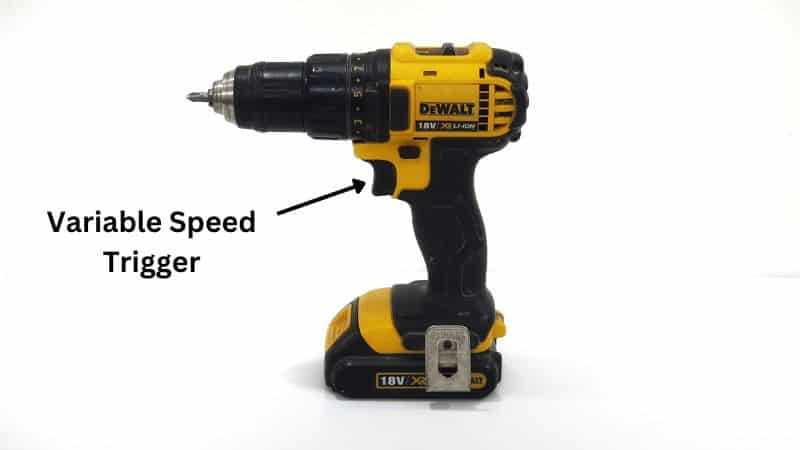
Why should your drill driver have a variable speed trigger?: What Is A Drill Driver Variable Speed Trigger?
The variable speed trigger on your drill driver lets you adjust the speed of your drill according to how much pressure you apply. And that makes a huge difference in how well your projects turn out!
There are many benefits to using a drill driver with a variable speed trigger! Let’s take a look at some of them now:
It improves accuracy – You will be able to have more control over what you’re doing. This can help prevent accidents, like when you accidentally break through your work surface or wall.
It makes the tool more versatile – A drill driver variable speed trigger is a great way to increase the versatility of your drill driver. It allows you to use the tool in a wider variety of situations, which means you can get more done and have fun doing it.
It helps protect delicate surfaces – Speed control means less damage to materials and more precision when drilling holes in them.
You’ll be able to get more done in less time – This is because you’ll be able to choose the appropriate speed for each task, rather than just using one setting all the time.
You can reduce friction and heat – You can reduce friction and heat when drilling into wood by slowing down the rotation of the bit.
A drill driver with a variable speed trigger is the Swiss Army Knife of power tools. It’s perfect for small jobs and big jobs alike, and it can help you do anything from woodworking to plumbing to home improvement projects.
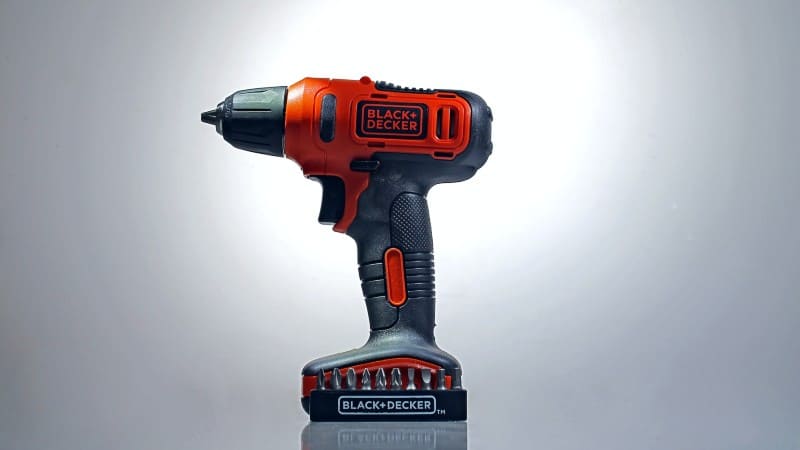
Note: This post may contain affiliate links. If you purchase a product through an affiliate link, I’ll earn a commission, at no cost to you. To find out more, see my full disclosure.
Do all power tools have a variable speed trigger?: What Is A Drill Driver Variable Speed Trigger?
If you’re new to woodworking, you may be confused by the idea of a variable speed trigger. You might think that all power tools have them, but they don’t. Here are some examples:
The basic table saw is used to cut pieces of wood. It doesn’t have a variable speed trigger and only operates at one speed. Here’s an example on Amazon.
Also, there are some tools that are capable of variable speeds, but do not use a variable speed trigger. For example, some drill presses use a system of pulleys of various sizes to control speed. To change the speed, the operator must manually move the belt from one pulley to another. Here’s a drill press like that on Amazon.
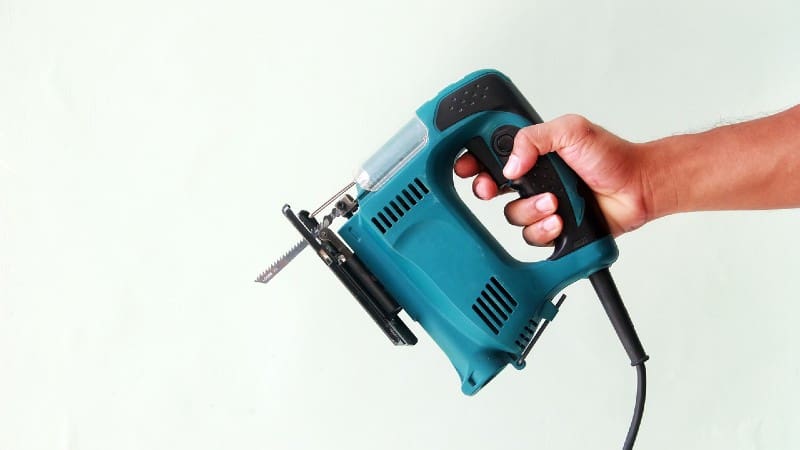
Related Questions: What Is A Drill Driver Variable Speed Trigger?
What is a hammer drill vs. an impact driver?
Drill drivers drill holes when in drilling mode and drive screws when in screwdriver mode. Some drill drivers have a hammer mode, which makes a pounding motion in the direction of the bit. This helps you drill into hard materials like masonry or cement. Here’s a hammer drill on Amazon.
An impact driver can also be used to drive screws and drill holes. However, it delivers the percussive action along the circle of rotation, rather than longitudinally, as with the hammer drill. See an impact driver on Amazon.
Do corded drills have a clutch?
Some do. However, others don’t. To give a more complete answer, I’ll go into more detail:
Most cordless drill drivers have a clutch you can adjust by moving the collar near the chuck that has numbers on it.
This allows you to control the maximum torque that the drill driver will deliver to the screw (Torque can be thought of as “rotational force”).
Why would you need to control the torque? Different torque values are required, depending on the particular job, material, and other factors. If the drill driver applies too much torque, you risk “over-driving” the screw so that it cuts through the material and travels below the surface. Also, you can risk stripping the head of the screw.
Here is a corded drill with a clutch on Amazon. Because it is corded, it does not run on batteries and requires access to an electrical outlet. This can be less convenient for the operator. Also, you need to be concerned about tripping over the cumbersome cord.
Here is a corded drill without a clutch. However, it still has a variable speed trigger.
What types of bits can I use in a drill driver?
Most drill bits can fit into the chuck of a drill driver, as long as the bit size of the bit is not greater than the size of the chuck. These include twist drill bits, brad point bits, spade bits, Forstner bits, and other types. I wrote another article about drill bits.
However, bits made for SDS (Slotted Drive System) drills can’t be used with drill drivers since they’re not compatible with normal chucks. This is because they have slotted ends that allow them to be moved in and out by SDS drills.
Also, drill bits used by some push drills are not compatible with normal chucks and cannot be used by drill drivers. Here is an example of a push drill with incompatible bits.
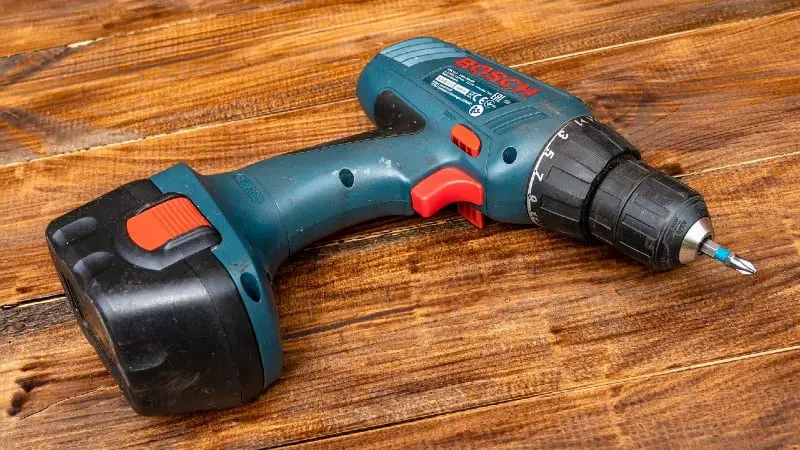
Final words: What Is A Drill Driver Variable Speed Trigger?
So there you have it—the drill driver with a variable speed trigger! A tool that will be a staple in your tool shed, and a must-have for any DIYer or woodworking enthusiast.
Did you enjoy reading this article? If so, you might like to visit my Pinterest profile. It contains pins about DIY & Crafts, Woodworking, Tools, Hardware, and many other things!

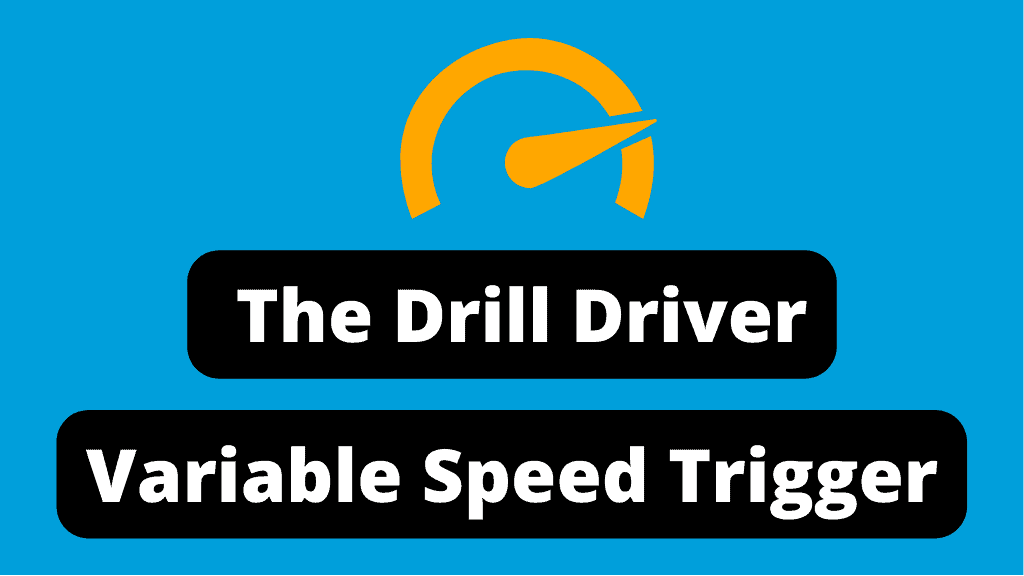
Thanks for the in-depth explanation of the drill driver variable speed trigger! I’ve always wondered about its significance. Given its importance in controlling speed, do you think it’s essential for beginners to start with a drill that has this feature, or can they manage without it initially?
Thank you for your thoughtful comment and question! I’m glad to hear that the article has been informative and helpful to you.
To answer your question, while it’s certainly possible for beginners to manage without a variable speed trigger on their drill driver, I would highly recommend starting with one. The reason being, it provides greater control over the drilling speed, which can be particularly useful for beginners as they learn how to handle different materials and drill bit sizes.
The variable speed trigger allows you to start slow, preventing the bit from slipping and causing a mistake. As you gain more confidence and feel for the tool, you can gradually increase the speed. This flexibility not only helps improve accuracy and efficiency but also extends the capabilities of your tool as you take on more complex projects.
However, if the variable speed option significantly increases the cost, a beginner could start with a basic model and then upgrade once they are more comfortable with drilling techniques and tool handling.
Again, I appreciate your engagement with our content! If you have more questions as you continue your woodworking journey, don’t hesitate to ask.